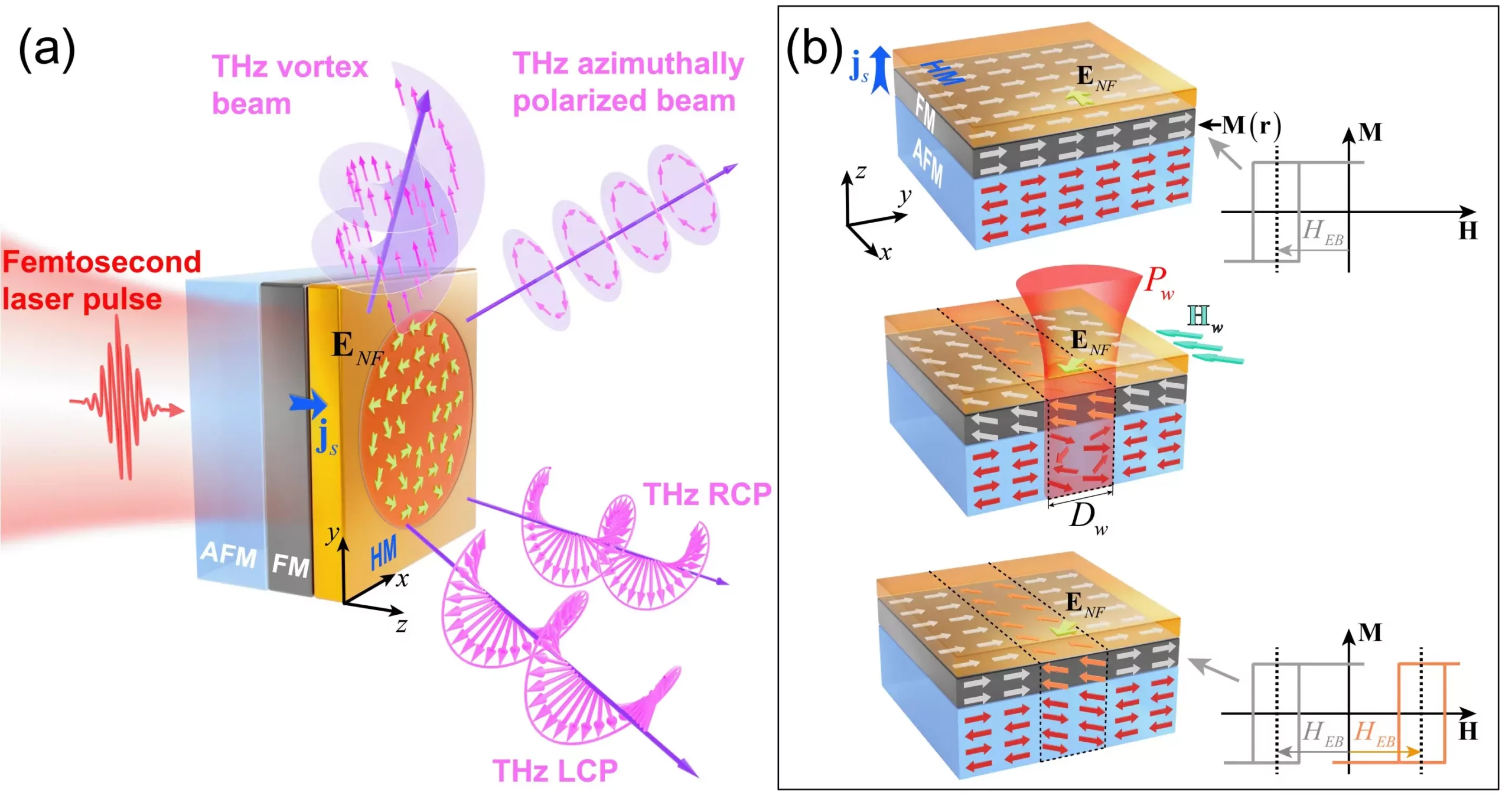In a remarkable advancement for the field of terahertz technology, researchers have unveiled an innovative method for creating structured terahertz light beams through the implementation of programmable spintronic emitters. This breakthrough, spearheaded by a team comprising Prof. Zhensheng Tao, Prof. Yizheng Wu from Fudan University, and Prof. Yan Zhang from Capital Normal University, presents a paradigm shift in how we generate and manipulate terahertz radiation—frequencies that lie healthily between microwaves and infrared light on the electromagnetic spectrum.
Terahertz technology has consistently intrigued scientists and engineers alike, thanks to its significant potential across a myriad of applications, including security scanning, medical imaging, and high-speed communication systems. However, the ability to effectively generate and control terahertz light has hindered progress in these arenas. This new method overcomes existing challenges by utilizing programmable spintronic emitters that consist of multilayer stacks of magnetic and non-magnetic materials, enabling the efficient conversion of laser-induced, spin-polarized currents into broadband terahertz radiation.
The Power of Programmability
At the core of this innovation lies a crucial advancement in programmability and precision. The ability for researchers to finely tune the magnetization patterns within these emitters opens doors to unprecedented flexibility in light generation. Shunjia Wang, a graduate student involved in the study, emphasizes the significance of this capability, stating, “This allows us to design and generate terahertz beams with complex polarization states.” Such complexity involves producing spatially separated circular polarizations, azimuthal or radial polarization states, and even the full Poincaré beam.
A Poincaré beam, characterized by encapsulating all possible states of light polarization within its cross-section, marks a stellar example of the applicability of this technology. This characteristic is not just a scientific novelty; it promises groundbreaking uses in generating unique optical forces, achieving flat-top intensity profiles, and facilitating advanced polarimetric measurements in a single shot. The potential implications for scientific exploration and practical application are enormous.
Paving the Way for Future Innovations
The demonstration of these structured terahertz beams marks a pivotal moment for the advancement of terahertz technologies. The successful generation of various controlled beams showcases the high functionality and adaptability of the new programmable emitters. Prof. Zhensheng Tao succinctly summarizes the impact of their findings: “Our findings pave the way for the development of novel terahertz devices with enhanced functionalities.” This sentiment echoes throughout the research community, as experts recognize that such advancements could revolutionize multiple sectors, from security to healthcare.
The introduction of programmable spintronic emitters, capable of generating intricate terahertz beams, represents not merely a technical achievement but a profound leap toward realizing the full potential of terahertz technology. The implications are vast, and as further developments emerge, we stand on the brink of a new era in scientific understanding and application of terahertz radiation.

